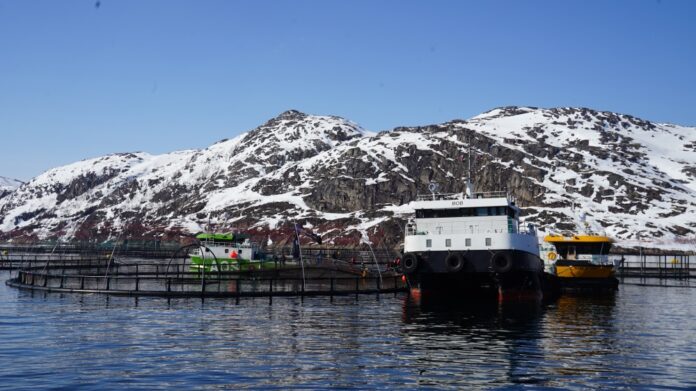The Russian federal fisheries agency Rosrybolovstvo has rolled out plans to establish new Atlantic salmon feed production capacities to replace imports from Denmark and Norway.
Several draft projects of mills designed to produce feed for Atlantic salmon have already been prepared. They are slated to become operational in late 2022 or early 2023, Rosrybolovstvo said in a statement distributed to the Russian press on 21 April.
The Russian salmon industry has experienced certain difficulties due to disruptions in logistics chains and “unfriendly” actions of some countries, Rosrybolovstvo claimed.
“For example, feed imports from Denmark have been stopped completely. They [Danish suppliers] accounted for 45 percent of the Russian market of the high-quality salmon feed,” the agency said, adding that Norwegian suppliers, which accounted for 51 percent of the salmon feed to the Russian market, so far, continue deliveries.
“Our partners from Norwegian could meet 70 percent of [Russian] demand in feed. However, this doesn’t cancel the task of replacing the import of salmon feed,” Rosrybolovstvo added.
Subsidisation and supply issues
The Russian government mulls plans to subsidize capital costs under the salmon feed plants projects. Three plants eligible for state aid can become operational in late 2022 or early 2023, the agency said.
In 2021, Russia imported 170,000 tonnes of salmon feed from Norway, Denmark, and Finland, Rosrybolovstvo said in a separate statement March 16, when the first problems associated with the supply disruptions were acknowledged by Russian authorities.
The domestic production of salmon feed stood at 20,000 tonnes in 2021. In the current conditions, Russian companies are interested in expanding and modernizing their production capacities, the agency claimed.
To fill the gap in the domestic market, Rosrybolovstvo used its March statement to call for focus on ramping up capacities at already existing facilities since building new plants would take from 16 months to 2-3 years.
Soaring costs
Russian fish feed producers fail not only to replace imported feed but also to increase their production capacities, Vasily Glushenko, chairman of the Russian fishing union Rosrybhoz said during the organization’s annual meeting April 7. Specifically, feed mills experience an acute shortage of high-quality fish meal, Glushenko added.
As estimated by the Russian fish feed producer LimKorm during the Rosrybhoz meeting, the production costs in the industry jumped by nearly 40 percent during the previous two weeks, as the price for the fish meal on the Russian market increased by 40 percent to 67 percent, while the cost of amino acids rose by 60 percent to 270 percent and vitamins increased by 100 percent.
In 2021, Russia produced 130,000 tonnes of fish meal, of which 88,000 tonnes were exported, Rosrybolovstvo estimated. The Russian authorities are considering different ways of encouraging fish meal producers to upsize supplies on the domestic market, with export restrictions being discussed as one of the possible options, Alexander Malashenko, chairman of the science and aquaculture department at Rosrybolovstvo confirmed during the Rosrybhoz meeting.

